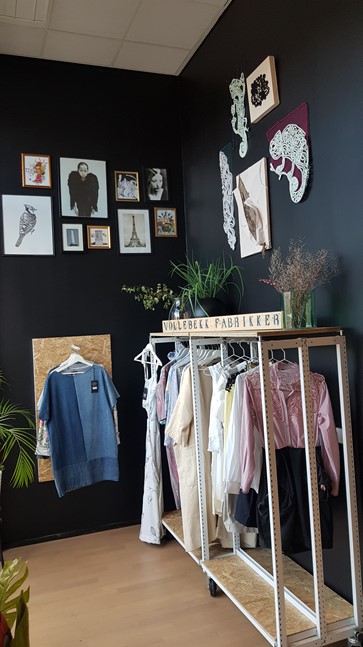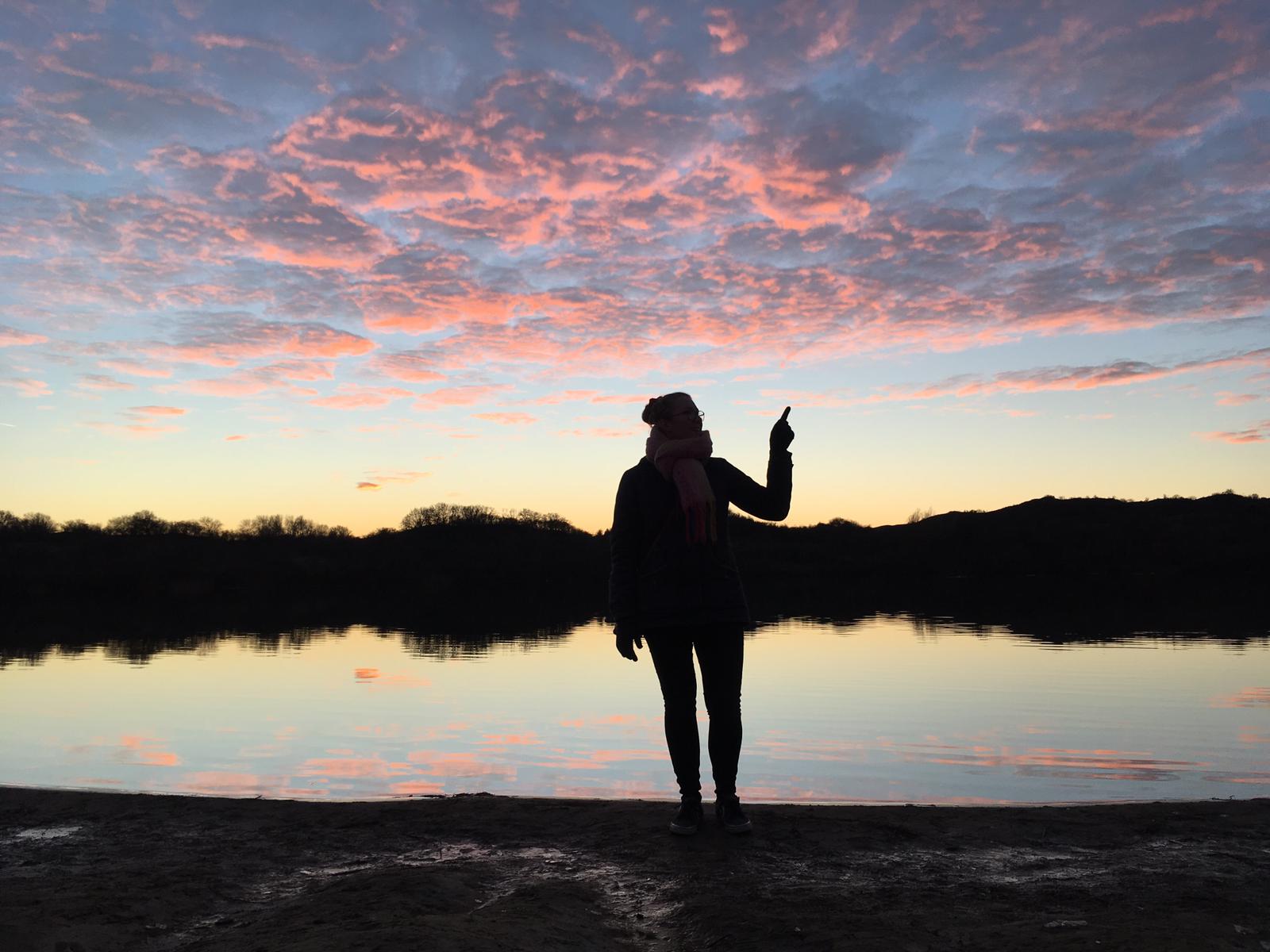Is your city ready to step up and empower the circular transition?
Edited on
30 March 2021By: Eileen Crowley, Lead Expert, Resourceful Cities.
Our third transnational meeting of the Resourceful Cities network took place on 27th & 28th January and focussed on the role of the municipality in accelerating the transition to a circular economy. Hosted by the city of Oslo, this virtual meeting proved that even when we can’t visit each other’s cities to meet face to face and explore inspiring initiatives in the flesh, with a little help from videography and continually evolving remote meeting tools, virtual city visits can be just as effective as the physical version and a lot more sustainable!

Photo 1: City of Oslo, by Thomas Ekström

What is the role of the city in the transition towards a more circular economy?
This question pops up time and time again within our Resourceful Cities network and within the frame of this meeting, we thought it was time to address it!
Where is the boundary between what the city should actively support and drive and when is it someone else’s job when it comes to the circular economy? The truth is there is no ‘one size fits all’ when it comes to these decisions. The precise role played by municipalities will differ from city to city depending on their vision, their capacity, their governance structures, the scale and level of collaboration within their circular ecosystem and on how far along they are in their journey towards developing a more circular economy. It is up to each city to define their own strategy, focus areas and precise role depending on their own set of unique circumstances, capabilities & ambitions.
What is known however based on a review of the available literature is that the role of the city in supporting the acceleration of the circular economy is indisputable. The OECD’s Circular Economy in Cities & Regions report (2020) identifies cities as having a vital role in the transition ‘as they are at the centre of key decisions determining economic growth, social well-being and environmental benefit.’[1] A 2019 report by Circle Economy based on research in several European cities argues that cities play a key role in making the circular transition happen. It states, ‘Municipalities and governments carry the responsibility and ability to create the boundary conditions for the circular economy to reach its full potential[2].’ A 2019 European Commission report notes that ‘public authorities can play a critical role as facilitators of change’. It goes on to say however that they rarely assume this role despite their unique position. Often they ‘are not aware of their potential role or may not have sufficient technical and human capacity and political support’.[3]
With that in mind, we took the opportunity during four, 2-hour sessions, to share some examples from our partner city of Oslo which showcased the valuable role which cities can play in promoting, facilitating and enabling the circular economy transition.
A city leading by doing & nurturing a culture of sustainability:
What becomes clear upon visiting Oslo is that their efforts at promoting more sustainable development are very obvious. It seems somehow ingrained within the culture of the city. This sense was confirmed through the cases presented during the meeting where we heard from city employees, Tonje Nerby (Head of Circular Economy & Consumption at the Agency for Improvement & Development), Astrid Johanne Svensson (Head of Sustainable Consumption, Agency for Urban Environment) and Tora Tokvam Drægni (Adviser Plastic Reduction, Agency for Urban Environment) who spoke about Oslo’s work in relation to driving the circular economy.
The municipality is acutely aware of the need to clean up their own act and show leadership through their own actions before telling others how to act and behave. The city has taken simple actions to reduce plastic within their buildings. In their cafeterias for example that have replaced takeaway cups with porcelain, they’ve removed disposal spoons and replaced plastic food containers with glass. The municipality is taking clear, yet simple steps in nurturing a culture of sustainability by embodying circular values and fostering circular norms.
With the help of Loopfront the city can easily keep track of its resources, ensuring ‘new’ is only purchased when absolutely necessary and waste becomes a concept of the past. Loopfront is a collaboration platform which helps to reuse building materials and furniture or recycles these into secondary raw materials. The platform makes it easy for the municipality to survey, inventorise, share, reuse, recycle and sell its resources.
Outside of its own organisation the municipality is actively working to inspire, develop and embed itself within a wider sustainability ecosystem. Working in collaboration with strategic partners, Oslo is undertaking pioneering work in relation to the built environment via its FutureBuilt initiative. This initiative is intended to inspire and change practices in both the private and the public sector through a series of pilot projects that are set to reduce greenhouse gas emissions from transport, energy and material consumption by at least 50%.
Together with Ruter Mobility the city is working towards a circular, sustainable and in demand public transport model whereby future bus contracts will require 100 % zero emission operation from 1st Jan 2029. The company is pushing for change, undertaking a value chain analysis of their vehicles and spotlighting issues previously left in the dark e.g. how much water is used in the making of a bus? The very act of asking these questions is spurring other actors within the value chain to monitor, measure and become more conscious of their material use. The is acutely aware of the value of data, data analysis and data sharing. We cannot change what we do not know. This awareness of the value of research and data is not unique to Ruter.
The city itself takes responsibility for the collection and management of all household waste. The city’s waste management department includes a small team dedicated to research, development & innovation. With the help of cameras, sensors and technology the team focus on gaining a deeper understanding of the city’s challenges in relation to waste management and work to come up with new and innovative ways to progress and improve the delivery of their service, increase recycling rates and driving down waste production. Among other things the team is currently working on an open data platform which will be open and accessible to members of the public once up and running.
To get a better insight, see the video from the R&D team of the waste management department in Oslo.
Responsible & Innovative Public Procurement:
Oslo understands the value of public procurement as a powerful tool that can help the city to achieve their strategic goals. In an effort to understand exactly how and where they are spending, staff are undertaking an analysis of the purchasing data in various departments of their municipality and it’s revealing valuable information in relation to what the city is buying most of and most frequently. Armed with this valuable knowledge the city can strategically map a route to more circular public procurement mechanisms sending a clear signal to businesses of the need to meet a growing demand for more circular and sustainable products and services.
Transforming public procurement procedures is of course no easy task and cities often struggle with this process. Support is much sought after, to overcome the challenges often experienced by cities whether that is in building a circular public procurement strategy, accessing funding to support innovative public procurement, understanding legal frameworks or monitoring and measuring spend and impact. We were delighted therefore to have Valentina Schippers-Opejko present during our meeting. Valentina is Coordinator of the Urban Agenda Partnership on Innovative and Responsible Public Procurement. She shared some excellent examples of circular procurement in action, including an example from the city of Haarlem which focused on waste reduction using coffee grounds to improve soil and develop a mushroom growing enterprise. Partner cities were informed of a freely available online training module developed as an output of the Urban Agenda Partnership. We were also reminded to register for the upcoming URBACT training in relation to strategic procurement.
Oslo’s Urban Resource Centres:
Partners were treated to a virtual video tour and presentation of some of the city’s urban resource centres. Oslo has a variety of these centres, ranging from mini-recycling stations such as the Coloseum station, with a focus on meeting the needs of citizens who have relatively small items they no longer need and wish to deposit, without the need for a car, to re-use centres such as the one in Lindeberg, that has a stronger community focus and goes beyond simply promoting reuse but provides wider community support, engagement and training services.
Click on the links, to watch the videos and get a better insight!

Photo 2: Colosseum mini re-use station

Photo 3: Repair classes underway at the Lindeberg Reuse Station.
These mini reuse stations facilitate sharing and sustainable resource management among citizens. The city wants to build on the success of the Lindeberg model however and further develop the mini reuse stations so they can become shared spaces – both reuse stations and informal meeting places hosting a variety of activities for the local population.
While these centres are community focussed other centres focus more on collaboration with the business community such as the urban resource centre known as Vollebekk Fabrikker .

Photo 4: Vollebekk Fabrikker
Vollebekk Fabrikker acts as an incubator for new circular businesses. The centre opened in a previously vacant industrial space in 2018 as part of a wider urban regeneration project. As well as incubating new businesses the centre provides training to the wider community and hosts events aimed at bringing together diverse sectors of society who share a common interest in sustainability.
Communicating the circular economy: finding the ‘magic slice’
The final session of our meeting focussed on the value of storytelling as a tool to help cities to engage stakeholders in circular economy efforts. Gráinne Dwyer, CEO of Stori Creative taught us about the importance of finding our ‘magic slice’ – that powerful 10% of content which really resonates with our audience. She talked about the importance of understanding and clearly communicating in simple terms why we do what we do and why it is important. We often focus on communicating what it is we do but tend to forget to communicate the reason why we are doing it and why it’s important to us.
If we want to engage people however we must clearly identify our core values and define simply the importance of our quest. Logic makes us think but emotion makes us act. We must use our brain to engage the facts in our communication but it’s vital we use our hearts if we are to connect with people and truly engage them in our initiatives and motivate them to act. Authenticity and empathy are key to finding this ‘magic slice’.
Do you dare to imagine a better future?
Daring to hope for a better future within the current crisis can sometimes feel like a brave and courageous leap of faith. Norway is one of the countries in Europe with the highest levels of consumption per capita yet its capital city seems acutely aware that the link between a good and meaningful life and material consumption must be broken. This awareness goes beyond aspiration and is followed through with tangible action on the ground. Other cities often look at Oslo as a front runner in many respects, perceiving their actions often to be out of reach and workable within their own local contexts, capacities and capabilities. In some respects this might be true since we all have different contexts to contend with.
We’ve seen here however that there are several simple steps that are within all of our reach. Seemingly small and simple steps can cause a ripple effect, contributing to the development of a strong cultural shift which motivates people to act for change. In the words of Bernt Reitan Jennsen, CEO of Ruter Mobility, circularity & ‘sustainability cannot be delegated to a single department’ it must become an intrinsic part of our culture be that within our families, our organisations or our cities. Without the support and empowerment of people we cannot achieve our vision for change. Leadership is critical in this regard. Leaders help to define a culture by embodying values, fostering norms and turning them into shared rules for behaviour.
Is your city ready to step up?
[1] OECD (2020) The Circular Economy in Cities & Regions. Available online via: The Circular Economy in Cities and Regions : Synthesis Report | OECD iLibrary (oecd-ilibrary.org)
[2] Circle Economy (2019) The Role of Municipal Policy in the Circular Economy: Investment, Jobs & Social Capital in Circular Cities, 2. Available online via: 5d15be02940ad0c394e7a9ff_circle_economy_-_the_role_of_municipal_policy_in_the_circular_economy.pdf (europa.eu)
[3] European Commission (2019) Accelerating the transition to the circular economy, 43. Available online via: A circular economy for plastics (europa.eu)
 Submitted by Esmée Dijt on
Submitted by Esmée Dijt on
